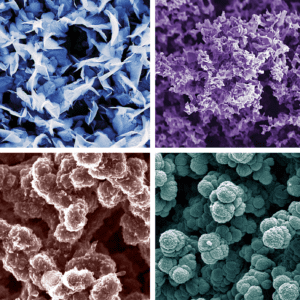Graphene has been touted as a “super” material, boasting ultra-high strength, superconductivity and many more superlative properties, but, as a planar two-dimensional material, its commercial use has been limited in terms of reactivity, since reactions can only occur at the material’s edges. “With graphene, it’s not highly tunable to the exact application that you want, so you’re often designing your application around what graphene could do for it, versus designing the graphene around what’s needed for the application,” explains Keith Norman, chief sustainability officer of Lyten, Inc. (San Jose, Calif.; www.lyten.com). Lyten has developed a proprietary reactor technology to produce three-dimensional graphene at scale from a methane feedstock, creating a new class of material that is more reactive and tunable for a wider variety of applications. Norman likens the production of three-dimensional graphene to crumpling and twisting a sheet of paper. “In our reactor, bending and folding the material increases the number of reactive sites by orders of magnitude. Equally important is that we can tune the material based on how we operate the reactor. From what we’ve seen, there are no other technologies able to deliver a three-dimensional graphene material to the market. The real differentiation lies in the ability to consistently tune three-dimensional materials to exact specifications,” explains Norman.

A visual of Lyten’s unique three-dimensional graphene (Source: Lyten)
With the unique graphene structures the technology can yield, Lyten is currently pursuing three distinct application areas: cathodes for lithium-sulfur batteries; light-weighting and reinforcement for thermoplastic composites; and advanced sensors and biosensors.
Lyten is in the process of closing its Series B fundraising round, which includes investment from leading automotive manufacturer Stellantis. Lyten currently operates an automated pilot-scale manufacturing line for graphene-enhanced Li-S battery cells in San Jose, and has commercial partnerships in place to utilize its graphene in engineered composite-based consumer products. Discussions are also underway with a major tire manufacturer to employ flexible graphene-based sensors on the interior of tires.